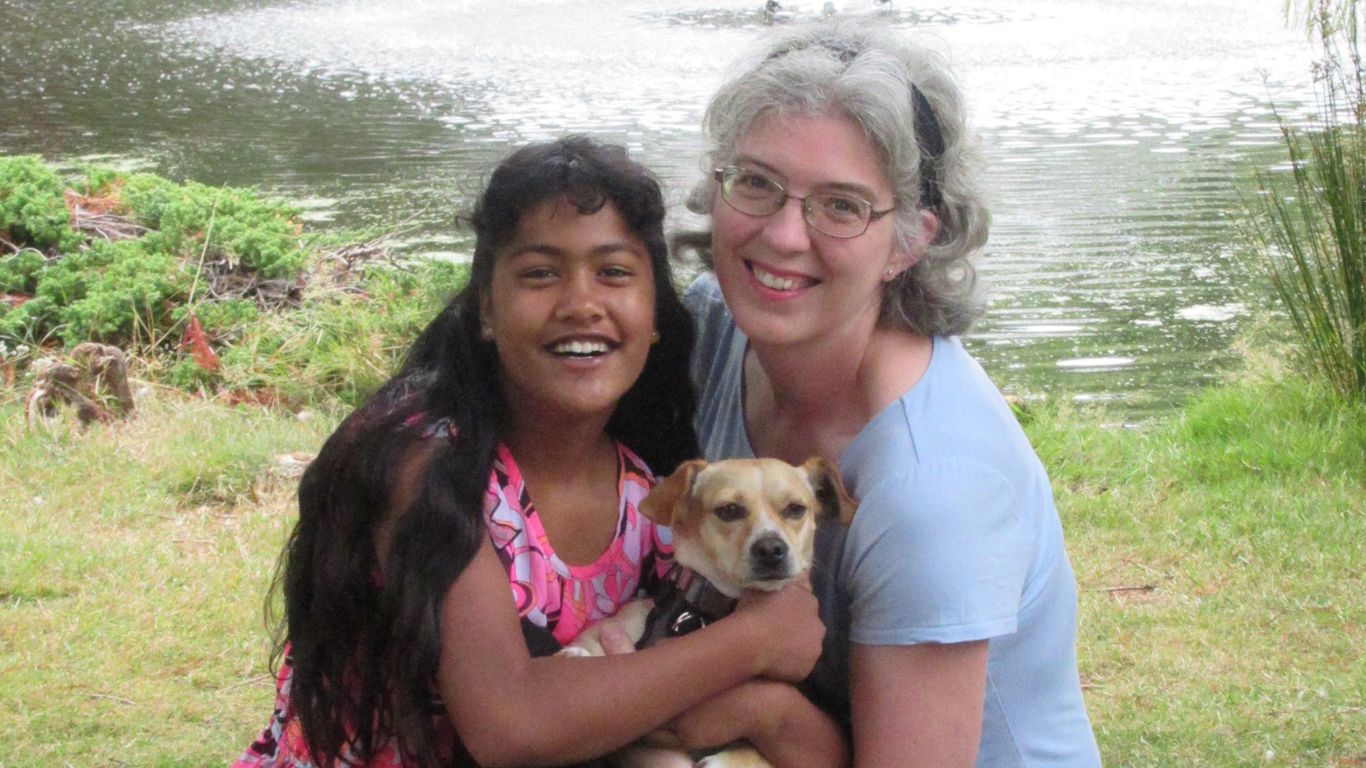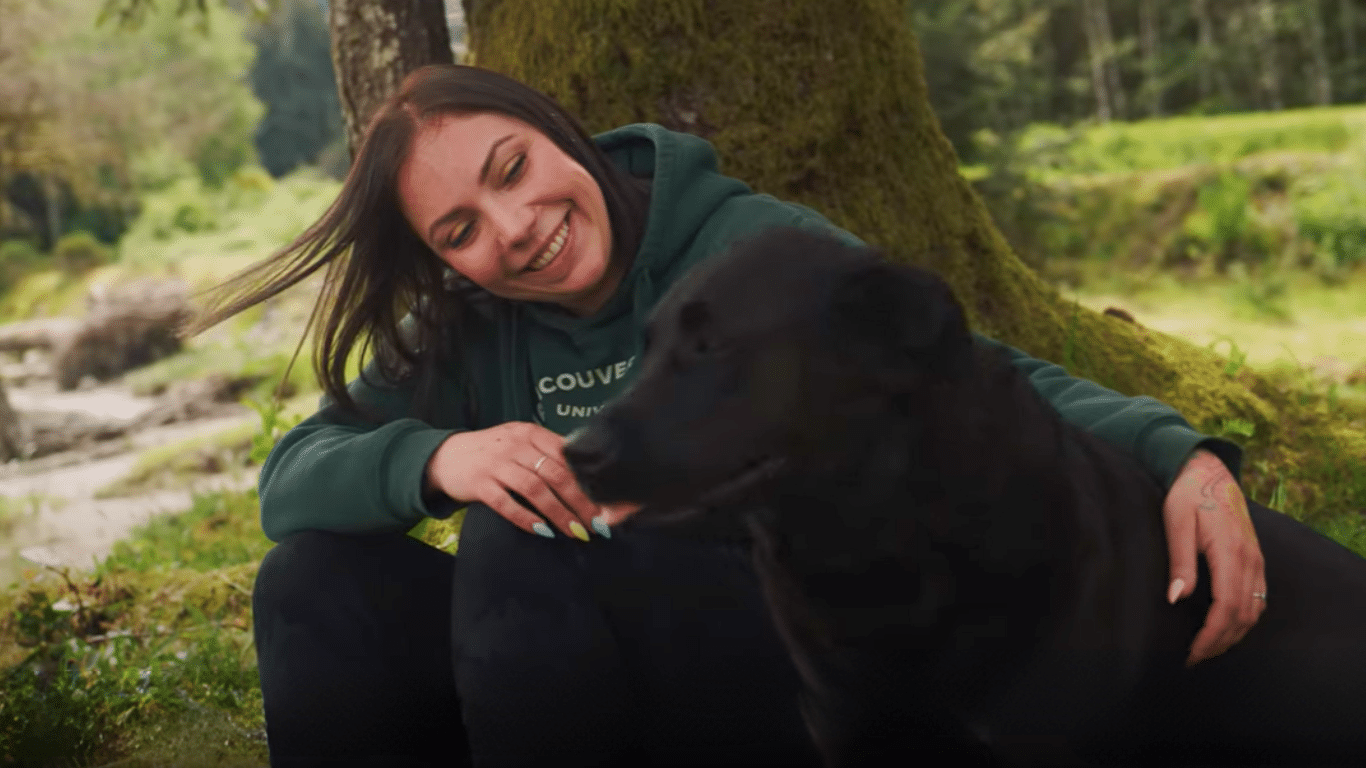Galya was adopted from Russia at age 11. Her new parents quickly learned ways to help their child with this momentous transition. They also fought the school system, which so often fails to acknowledge the challenges faced by an internationally adopted child.
Galya was almost 12 years old when we brought her home from Novosibirsk. It was just three weeks before a new school year began.
Early days
By the time we arrived in Vancouver, the feisty veneer that Galya showed in Russia was wearing thin. She sat in the front seat of the car with her new dad, a tiny figure with big eyes, plastered bolt upright against the seat. Once she saw her room, and tasted Nana’s welcome home cake, she looked happier. But then came nighttime.
Falling asleep in her new home was frightening for Galya—I could feel it. So I brought out some Russian children’s books and offered her one to read. It really helped her settle. In the morning, I noticed she seemed very disoriented, and I remembered the Russian videos I had seen at the Slavic deli on Hastings Street and rushed out to get some. Over the next few weeks, we made several runs to stock up on more Russian cartoons.
What I think was happening was that when Galya went to sleep, she was back in Russia. When she awoke, she was in Canada, becoming Canadian; the boundary between these two worlds was the hardest part of the day for her to negotiate. So she read Russian fairy tales before bed, and, when she woke up, I guided her to the television and sat her down in front of familiar Russian cartoons. In a half hour or so she could join us for breakfast. In this way, we navigated those tricky transitions between waking and sleeping and back again. These rituals helped get her through the first couple of months of life with us.
During those first three weeks, she was also meeting people, including some Russian friends. Though she could call these friends for support and help, she never did. That’s the kind of resilience that a determined child who has spent most of her childhood in an orphanage can develop.
Starting school
It might be because we are both teachers, but my husband and I didn’t hesitate for a second to enroll Galya in school. On the first day, she literally ran into the building.
I quickly realized why Galya loved school so much. It wasn’t only her marvellous ESL teacher, it was also because the school environment was so much like her orphanage. One caregiver, a female, in charge of 18 or so children, housed in a larger social network of similar groupings. How strange it must have been for her at home—two caregivers, one male, no other children.
It took Galya five or six months to feel some real confidence in using English. It helped that as well as having an aptitude for language learning, she was also willing to take risks. She wouldn’t hesitate to use any word she could muster, employ body language, and whatever else she could think of, to get her meaning across.
About two weeks after her arrival we were in the car, just the two of us. This was always the most difficult situation for me. Anywhere else I could use body language, gestures, facial expressions, my Russian-English dictionary, pictures, or actions to communicate with her. In the car, it was much harder. We were at the corner of Cambie and King Edward, and I saw a nice garden on the left hand corner. “Krasiveya sveti!” I said. Galya responded, “Yeah, yeah. Beautiful flowers.” I was floored. How had she learned all this language in such a short time? Twenty-four hour immersion is the answer, along with that inquisitive, observant nature.
Advocating at school
By January of her first school year, I was already in advocacy mode. Galya had turned 12 on December 16, which meant that she would go to high school the following year, which I knew was far too early. Her best friends were only nine years old, and she had not reached puberty, nor was she emotionally or socially ahead of her classmates. So, I met with the principal and wrote long letters explaining the special circumstances of international adoptees and of this child in particular. As I reread those letters, one sentence stands out as key, although I have no idea whether it played a role in the decision: “Thank you very much for understanding that children who are adopted at an older age need special consideration according to their own pace of development.” She was allowed to continue at the elementary level for one more year. I was pleased, but I also knew that requesting that she stay for another year after that was going to be a bigger challenge.
After numerous discussions, and an ever growing correspondence file, I finally convinced the school principal to support my request to the school board for yet another year in elementary for Galya. The board didn’t get back to me for months. In the end, I gathered the support of the parents of Galya’s best friend, the directors of our adoption society, our adoption social worker, and Galya’s family doctor—and asked if they would come to a meeting. I then called the superintendent’s assistant, and told her what I had in mind—within the hour, I had a decision. Galya could stay where she belonged.
Meanwhile, her English language skills were progressing by leaps and bounds. I would say she was halfway to fluency within her first year in Canada and, by the time she left elementary school, she was almost entirely fluent.
Galya worked hard and did very well at school. Overall, she developed good study habits and enjoyed doing well. To cap off her Grade 7 year, she won the Scholastic Achievement Award, which recognized not high grades, but hard work, progress and enthusiasm.
If there is anything to be learned from our experience, it is a simple, demanding, tried and true recipe. As a parent, you must champion your child’s cause in the school system. Observe him or her carefully, learn what you can from teachers and other professionals, and then move forward with the certainty that you know what is best for your child.
Marilyn Brulhart is an English academic preparation instructor at Douglas College.





